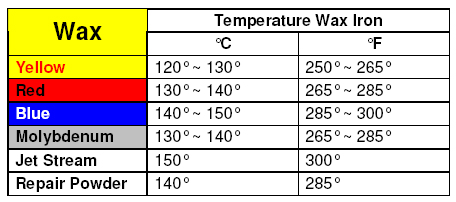
Snow Versus Air Temperature - Why?
Wed, Jan 21, 2009 - By Ian Harvey
We were emailed the following excellent question (paraphrased):
Dear Toko,
I was wondering if you could help me. Your hot wax products should be chosen according to snow temperature. When preparing to train or go to an event, it is not always possible to establish the snow temperature in advance. Is there a way I can approximate the snow temperature from an accurate air temperature reading at the venue?
Answer:
Thank you for your question. I think there are many people asking themselves the same thing. The snow versus air temperature issue can be confusing, so let me first try to give some general information first before addressing anticipating snow temperature specifically.
First, there is no reasonable wax technician in the world who would ever pick a wax based on air temperature and humidity (except for when it is snowing - see below). Everybody considers snow temperature and follows much of the same thought process that I will describe below. We take these measurements (temperatures and humidity) primarily to anticipate how much moisture is in the snow. Air temperature will also tell you a lot about what the snow is going to be like in a while, but doesn't tell you much about what it is like currently.
Snow reacts slowly to changes in air temperature. If the snow temperature is 20F and the air temperature is 30F, you can be confident that the snow is warming. This generally occurs in the morning. In the late afternoon, the air cools off and you might find a snow temperature of 30F and an air temperature of 20F which tells you that the snow is cooling.
Here is a common scenario which illustrates why depending on air temperature is simple folly: there is an event on Saturday starting at 10am. The overnight low Friday night was 5F. The forecasted high for Saturday is 35F. The air temperature at 10am will probably be about 25F. This means that according to the air temperature, a wax similar to a red/yellow mix should be used. However, the snow temperature in such a scenario would most likely be 10-12F still (because the snow warms far slower than the air does). This would justify using blue or a blue/red mix. There are huge differences in using a blue/red mix and a red/yellow mix. If you use a red/yellow mix on snow that is 12F, you will certainly have very slow skis. So, what to do?
Consider the overnight low. Then consider the forecasted high of the day and what time of day it might reach this high. Also consider whether or not this temperature will be everywhere or only in the sunny exposed areas. Try to guess the air temperature for when you might be skiing (somewhere between these two numbers). Then consider again the overnight low and the air temperature for when you anticipate skiing. Somewhere between these numbers, probably closer to the overnight low number, will be the snow temperature for when you will be skiing. That's the temperature that you should wax for. The one major exception is if precipitation is anticipated. In that case, waxing should be done for the anticipated precipitation. In parts of the country falling snow acts "warm" and it glazes up like crazy requiring a warmer wax (pretty much everywhere but the Rockies). In the Rockies, it often times snows very dry, even at warm air temperatures, and this often times requires a colder wax than the temperature would indicate.
Bottom line is that snow temperatures are quite predictable if you know the overnight low, the race start time, and have a feel for what the air temperature might be for when you are skiing. The combination of the snow temperature and observing what kind of crystals are present (corn, powder, etc) give you the most important information needed when determining what wax to use.
Recommended Iron Temperatures Chart
This chart as well as a whole lot of other practical information is located on the info center portion of the Toko US website. You can find it by going to www.TokoUS.com, clicking on Nordic, and then on Info Center. Or click this link.

